HAPPY HALLOWEEN
Vase:
Flower pot:
Grow This

Podcast: Play in new window | Download
Subscribe: Apple Podcasts | Podcast Index | RSS | More
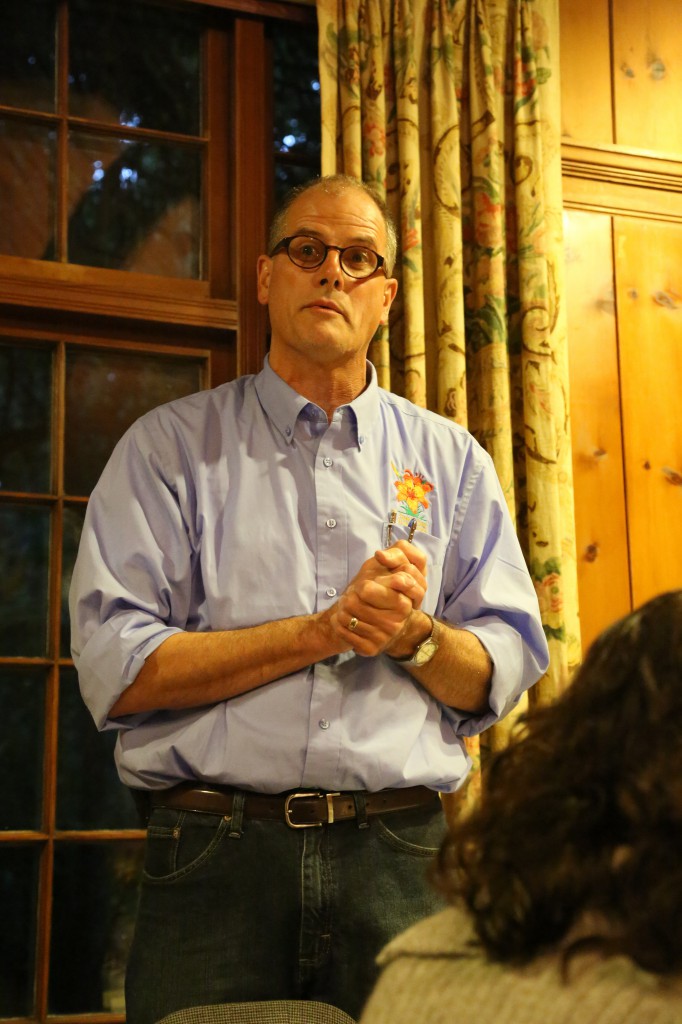
Meet Lane DeVries, CEO of The Sun Valley Group, America’s largest cut flower farm, and Chairman of the California Cut Flower Commission.
American Flower Farming Update with Lane DeVries, Chairman of the California Cut Flower Commission (Episode 112)
Today’s interview is with Lane DeVries, a fourth generation flower farmer who grew up in his family’s business in Holland until he came to the US in 1983, at the age of 23.
I’ve gotten to know Lane in the past few years while partnering with him on projects for the California Cut Flower Commission, the advocacy agency that promotes that state’s 225 flower farms. His farm, The Sun Valley Group, based in Arcata and Oxnard, is the state’s largest (in fact, it’s the country’s largest).
Lane and I recently met in Portland, at the Field-to-Vase Dinner, a very special gathering of flower farmers, florists, flower retailers and wholesalers and the media, held on October 8th.
I co-hosted the event with the CCFC and our goal was to convene floral industry leaders to discuss new initiatives in the American Grown Flower Movement.
The underlying message: partnering with your would-be competitors is a good idea when it comes to changing how consumers connect with domestic flowers.
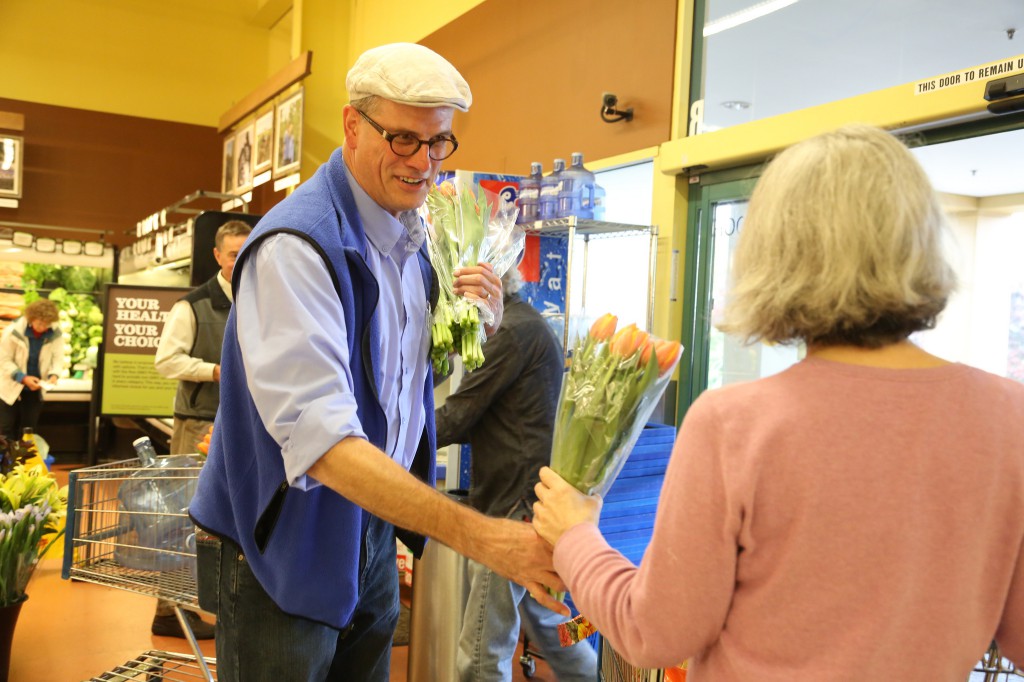
Lane takes time to meet flower consumers as often as possible. He recently made an appearance at New Seasons Market in Portland, Oregon.
My podcast interview with Lane took place via Skype, a few days after that dinner. Please enjoy our conversation and meet a man who lives and breathes cut flowers. I love that Lane, in spite of all of his professional success, continues to eagerly seek out the next new thing. He sees old flowers in a new way and improves on customer favorites with new hybridizing methods.
He is a visionary and I credit Lane with his amazing leadership moving his own flower farming community into an important dialogue about American grown flowers.
The next time you see a blue-and-yellow license plate-style CA-Grown label on a bouquet of flowers at the supermarket, you’ll have people like Lane DeVries to thank.
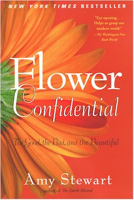 Highlights of Lane’s long career in the U.S. cut flower industry are chronicled in Amy Stewart’s 2007 book, Flower Confidential: The Good, The Bad, and the Beautiful – and you can read an excerpt of that story here, courtesy of Amy and Algonquin Books of Chapel Hill (c) 2007 and 2008. All Rights Reserved.
Highlights of Lane’s long career in the U.S. cut flower industry are chronicled in Amy Stewart’s 2007 book, Flower Confidential: The Good, The Bad, and the Beautiful – and you can read an excerpt of that story here, courtesy of Amy and Algonquin Books of Chapel Hill (c) 2007 and 2008. All Rights Reserved.
(Photos (c) Linda Blue, courtesy of the California Cut Flower Commission)
Note: This article originally appeared in the online edition of The Oregonian, October 17, 2013. Click here to read the online version where you can comment and Tweet the link. I want to acknowledge up front that the Field-to-Vase Dinner concept and format began in June 2013 at the Monterey Bay Greenhouse Growers Dinner, created by my friend Kathleen Williford of the California Cut Flower Commission. The Portland event earlier this month was based on her model and she was there in spirit! Follow Kathleen at @kathinated.
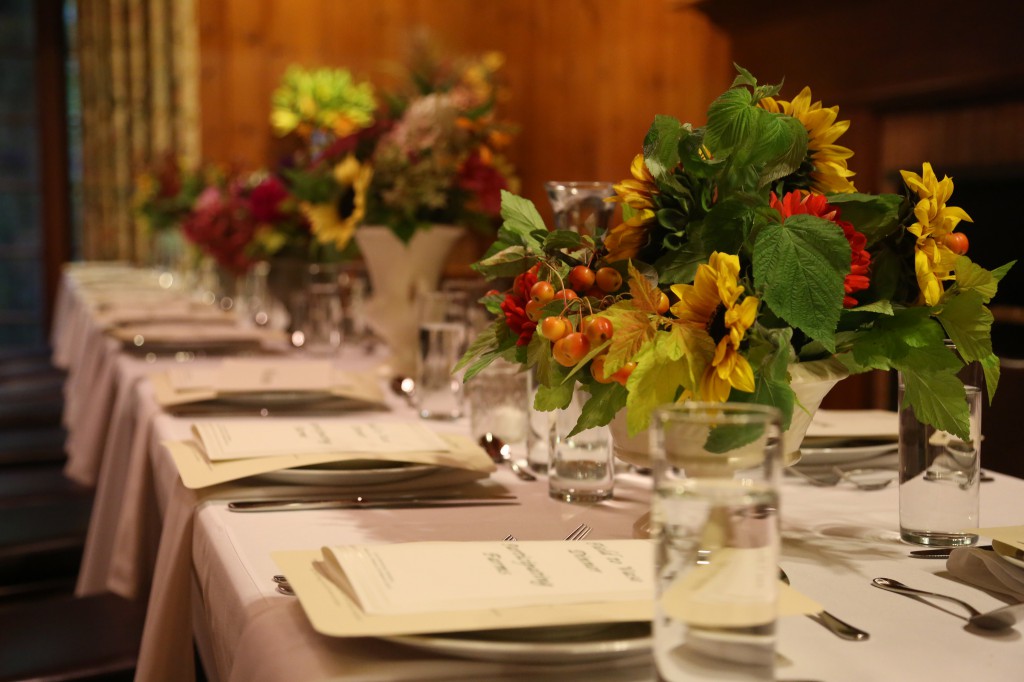
The table was set with American-Grown flowers, the vases containing stems from Oregon, Washington & California cut flower farms.
A coalition of California cut flower farmers recently arrived in Portland, extending their hands of friendship to the local floral industry. They weren’t exactly holding olive branches, although those botanical elements would likely be found in a vase of California-grown blooms.
No, the reason was self-preservation, not just for the seven California farms in attendance, but for their counterparts in Oregon and Washington.
Their Field-to-Vase gathering took place on Oct. 8 at Leach Botanical Garden in southeast Portland, where a local caterer served a decidedly local menu to about 40 flower farmers, floral retailers and wholesalers, and designers.
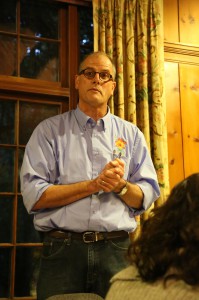
Meet Lane DeVries, CEO of The Sun Valley Group, America’s largest cut flower farm, and Chairman of the California Cut Flower Commission.
DeVries is also the current chairman of the California Cut Flower Commission, the organization that hosted the event.
U.S. flower farms once produced nearly 65 percent of the nation’s cut flowers, but over the past two decades, imports from South America have caused that figure to shrink to around 20 percent, DeVries said.
“We’ve actually seen cut flower operations go out of business in a lot of states,” he said. “The reason we are reaching out to (Northwest) flower farms is to work together as an American-grown domestic flower movement.”
Flower farming cooperatives are well established in the Northwest, dating to 1942 when the Oregon Flower Growers Association was founded. The wholesale farmer-to-florist market operates from a warehouse in Portland’s Swan Island industrial district with about 30 vendors.
In 2011, inspired by Portland’s home-grown floral business model, the Seattle Wholesale Growers Market opened on behalf of 16 Oregon and Washington flower farms.
According to Diane Szukovathy, a Mount Vernon, Wash.-based farmer and the Seattle growers’ market president, the emerging market’s locally grown efforts gained momentum last fall when it received $138,000 in USDA Specialty Crop Block Grant funds, administered in partnership with the Washington State Department of Agriculture and the Oregon Department of Agriculture.
“The grant money helps us open more distribution channels for local farms to sell their flowers,” Szukovathy said. “Together, we can all shed light on major shifts in how people buy flowers.”
A wide variety of Northwest-grown flowers and foliage is found in the floral departments of New Seasons Markets.
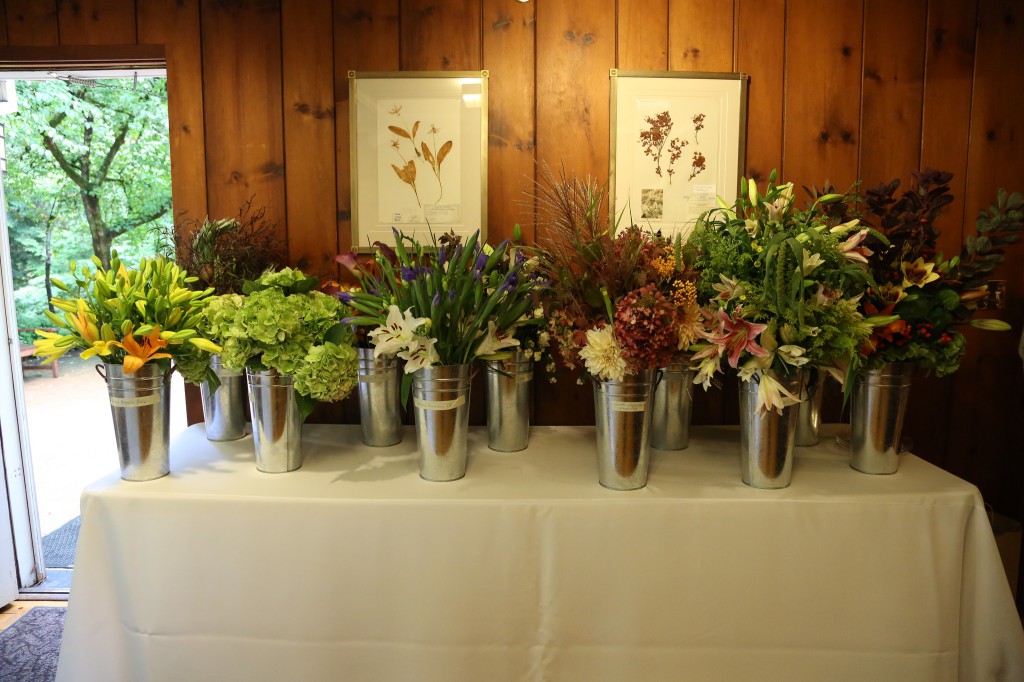
These Farm Bouquets represent the participating flower farms from California, Oregon and Washington – a veritable bounty of botanical excess!
Katie McConahay, the chain store’s floral merchandiser, said she’s starting to expand her definition of what is local and seasonal to include California-grown flowers, especially during the winter months when production on Northwest flower farms is lower.
“When I buy for our stores, my focus is definitely on Oregon- and Washington-grown flowers,” McConahay said. “For many of our customers, California was not considered ‘local,’ but in order to sustain an American-grown floral product consistently throughout the year, California is a good year-round option for us.”
She hopes better product information and education at stores will help consumers see that domestic flowers, even from one state away, offer an alternative to imported ones.
For Christopher Papst, a manager-buyer with Greenleaf Wholesale Florist, based at the Portland Flower Market, bringing California flowers to the Northwest is a logical next step after sourcing locally, especially in the off-season when production is limited on Oregon and Washington flower farms.
“For one thing, the transportation costs are better,” he explained. “Ninety percent of imported flowers come through Miami, followed by three to four days on a truck. Even under ideal conditions, it’s still four days. For the freshness factor alone, I want California flowers.”
Increasingly, florists are coming to Greenleaf with specific requests for local and seasonal flowers, Papst added. “I just had a florist asking where our flowers originated from because she had a customer insisting on local flowers.”
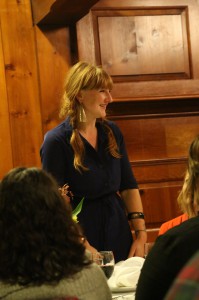
Elizabeth Artis of Espe Floral + Foliage, a Portland designer with a commitment to local and seasonal flowers.
Elizabeth Artis, owner of Espe Floral + Foliage, a flower shop inside the Food Front Cooperative Grocery in northwest Portland, was encouraged by the connections she made at the gathering. Her studio’s tagline is “local, seasonal, sustainable, lovely,” a sentiment that resonates with her eco-minded customers.
“I’ve always considered California ‘local,’ and now I have a new vocabulary to communicate that idea to my clients,” she said. “As winter is coming, having flowers from California – just across the border – will give me more options.”
Debra Prinzing is a Seattle-based design writer, author of “The 50 Mile Bouquet” and “Slow Flowers: Four Seasons of Locally Grown Bouquets from the Garden, Meadow and Farm” and creator of Slow Flowers, a new, free online directory to help consumers find florists who use American-grown flowers.
READ MORE…
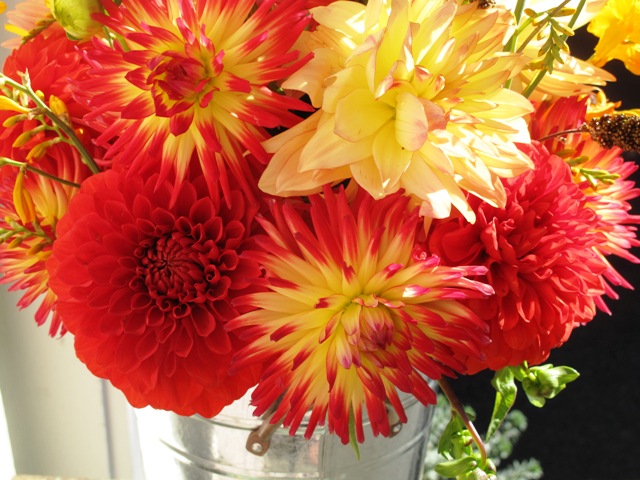
The season for dahlias is almost over, but these vivid selections are a reminder of how much we LOVE this amazing flower.
Podcast: Play in new window | Download
Subscribe: Apple Podcasts | Podcast Index | RSS | More
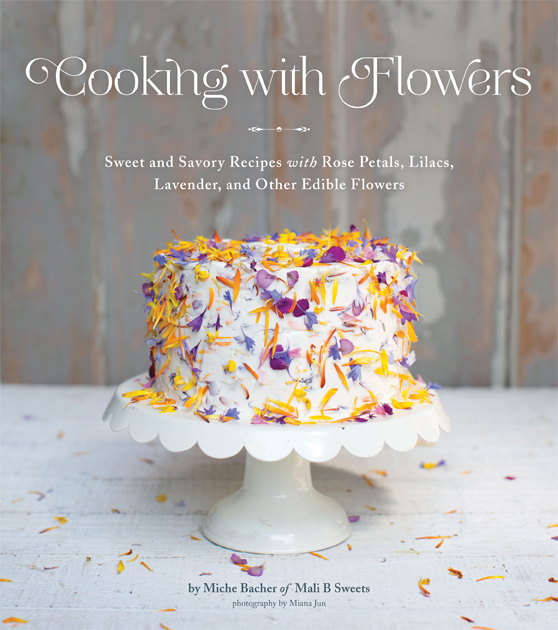
Featured on the cover of “Cooking with Flowers” is Miche’s “Flowerfetti” Calendula Orange Cake. Flower petals are the “original cake confetti,” she maintains. Roses, dianthus, bachelor buttons and marigold petals adorn this enticing confection.
Today we’re going to talk about eating flowers.
Yes, flowers as food.
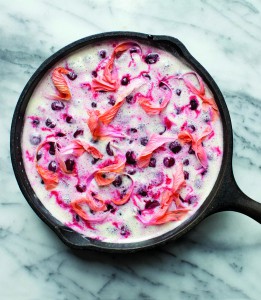
Hollyhock Clafouti, a cross between a custard, a pancake, and a puffy omelet. Uses 1 cup hollyhock petals.
I once had a big-time New York editor say to me: Why should I care about how flowers are grown, anyway? After all, we don’t eat them!
As a response to that challenge, I wish I had been able to pull out “Cooking with Flowers,” the most eye-satisfying book I’ve ever seen. It was created by Miche Bacher, an herbalist, chef, and founder of the custom confectionary studio Mali B Sweets.
To WIN a free copy of “Cooking with Flowers,” courtesy of Quirk Books, listen to to my interview with Miche and make a comment below about the best edible flower tip you learned. I will draw a winner at random on Tuesday, October 22nd at 5 p.m. Pacific.
I learned about this beautiful cookbook from Mari Malcolm, an editor at Amazon who absolutely loves “Cooking with Flowers.” Mari showed me the book’s beautiful cover on her phone screen during a lunch we had together this past spring.
I keep ordering this delectable book and then giving it away as a gift to my flower lover-friends. And now, it is my great pleasure to spend this episode of Slow Flowers in a floral-focused conversation with Miche.
In her introduction, Miche writes:
“Flowers add color, complexity, and what I like to call the magical ‘what’s in it’ factor to your food. They are full of nutrients and often offer health benefits, too. You don’t have to be a master gardener or a trained chef to cook with flowers – once you start looking, you’ll realize edible blossoms are all around you, and it really is a breeze to use them.”
She is definitely a chef whose work begins in the garden. Through “Cooking with Flowers,” I’ve gained new inspiration for another important reason to appreciate local flowers.
I know you will learn much from my conversation with Miche, as we discuss her favorite culinary ingredients, including the lowly dandelion.
![Fresh and candied lilac flowers are the captivating ingredient in Miche's "Coconut Lilac Tapioca," a recipe in her book, "Cooking with Flowers" [photo: (c) Miana Jun, used with permission]](https://www.slowflowerspodcast.com/wp-content/uploads/2013/10/CoconutLilacTapioca-1024x411.jpg)
Fresh and candied lilac flowers are the captivating ingredient in Miche’s “Coconut Lilac Tapioca,” a recipe in her book, “Cooking with Flowers” [photo: (c) Miana Jun, used with permission]
![4 tablespoons of dianthus petals, coarsely chopped, infuse this delicious cake that also includes 2/3-cup rose' wine. Dianthus whipped cream and candied dianthus flowers are a perfect embellisment. [photo: (c) Miana Jun, used with permission]](https://www.slowflowerspodcast.com/wp-content/uploads/2013/10/PinkRosecake-903x1024.jpg)
4 tablespoons of dianthus petals, coarsely chopped, infuse this delicious cake that also includes 2/3-cup rose’ wine. Dianthus whipped cream and candied dianthus flowers are a perfect embellisment. [photo: (c) Miana Jun, used with permission]
Here are some links we discussed in the interview:
Mali B’s Edible Flower Chocolate Collection:
Memorial Sloan-Kettering Cancer Center LINK to Herbs, Botanicals & Other Products:
Click here for MORE about COOKING WITH FLOWERS, including exclusive recipes that Miche couldn’t fit into the book. You’ll also find bonus recipes for the medicinal and cosmetic use of flowers, salves, oils, and teas for healing; download recipe cards and read a Q&A with this talented woman.
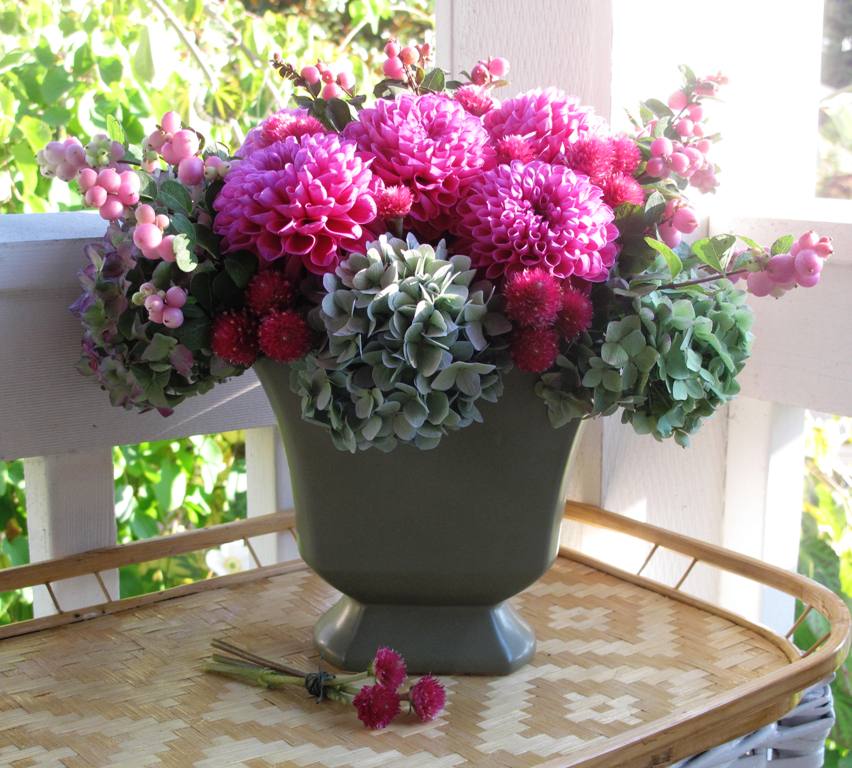
Autumn hydrangeas, pink snowberries, luscious dahlias harvested just before late October frost and ball-shaped gomphrena add up to something quite charming.
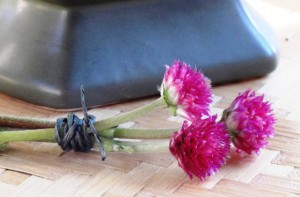 Group for impact: Tiny flowers can disappear when they are added to a bouquet with mostly larger blooms. One of the ways to give them more impact is to group three or five into a mini-bouquet, tied with bind wire or string. When added to the bouquet, the small cluster reads as a color block that’s more noticeable in the overall composition. Here, I wired together several sets of the clover-like globe amaranth flowers and inserted them between the much-larger hydrangea and dahlia blooms.
Group for impact: Tiny flowers can disappear when they are added to a bouquet with mostly larger blooms. One of the ways to give them more impact is to group three or five into a mini-bouquet, tied with bind wire or string. When added to the bouquet, the small cluster reads as a color block that’s more noticeable in the overall composition. Here, I wired together several sets of the clover-like globe amaranth flowers and inserted them between the much-larger hydrangea and dahlia blooms.Podcast: Play in new window | Download
Subscribe: Apple Podcasts | Podcast Index | RSS | More
CORRECTED AUDIO INCLUDED HERE~
Sarah Ryhanen of Saipua, is a Brooklyn floral designer who has planted her own flower farm (Episode 110)
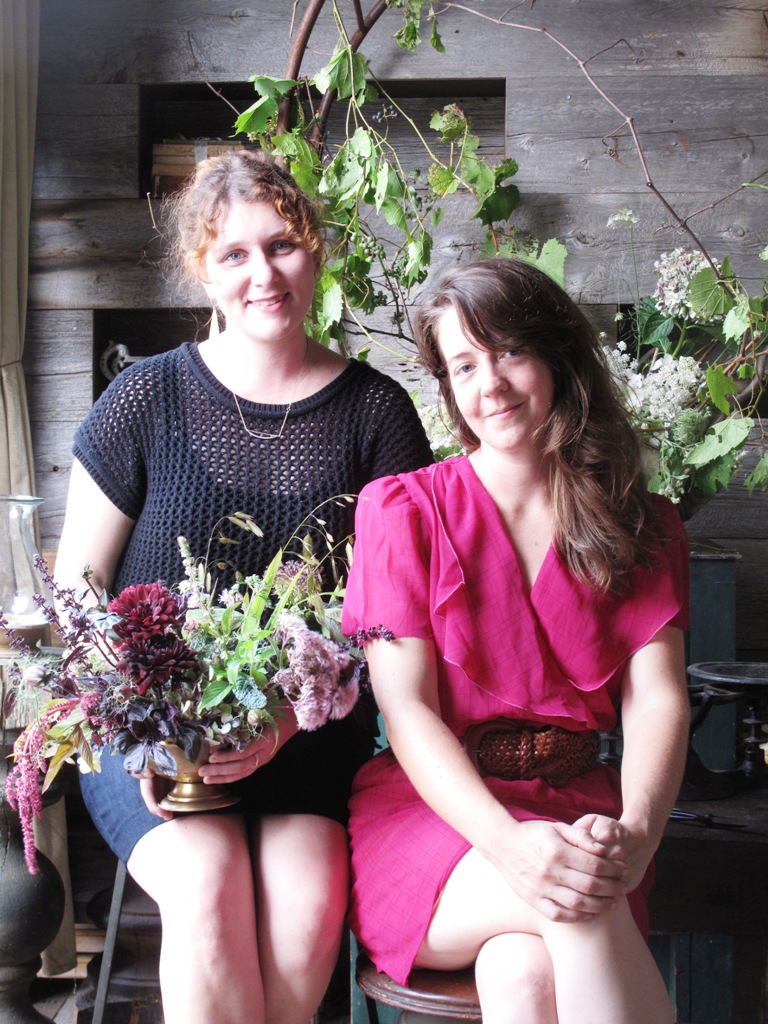
Nicolette Owen (left) and Sarah Ryhanen (right), collaborators in The Little Flower School of Brooklyn.
I first learned about Sarah Ryhanen when I read an article about The Little Flower School of Brooklyn, a venture she had created with fellow floral designer Nicolette Owen of Nicolette Camille Floral. The article was in none other than the New York Times, in which the writer proclaimed the renaissance of old-fashioned floral design for modern-era crafters.
Reading that article was like a huge floral flag being waved in front of my eyes.
Right on! The floral world I was so fascinated with documenting for The 50 Mile Bouquet was in good hands with these young, passionate, talented, urban designers.
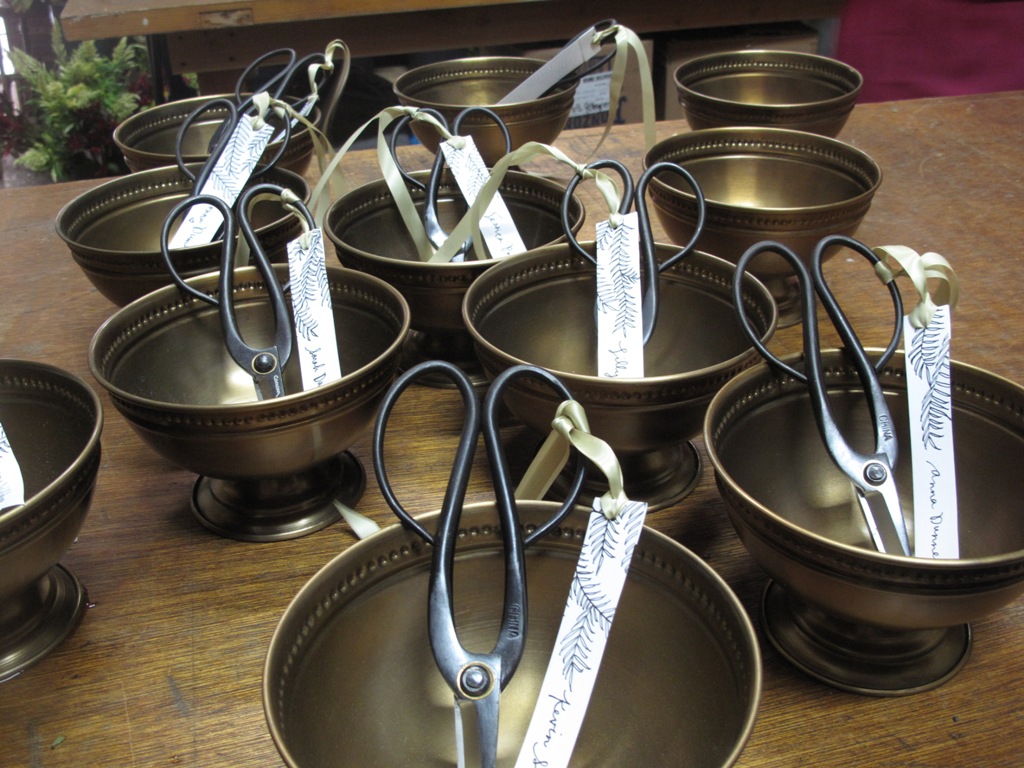
All the supplies, beautiful, simple and ready for the flower arranging students at The Little Flower School of Brooklyn.
So like probably everyone else in the country, I started stalking Sarah through her web site and blog, and following Nicolette’s work through her web site and the lovely floral arrangements she created for Bringing Nature Home (Rizzoli, 2012), a book by photographer Ngoc Minh Ngo.
When I spent a few days in New York City last August, I contacted them to ask whether I could sit in on one of their workshops. The class was sold-out, of course, so I was just an observer. It was amazing to me that 12 persons (11 women and 1 man) gathered on a sweltering Saturday morning to create bowls of flowers in an un-airconditioned warehouse-studio in Brooklyn. There was so much excitement in the room, with a combination of newcomers and repeat students. People soaked up every word, concept and idea Sarah and Nicolette offered – and they were unabashedly proud of their own creations.
Every detail was attended to in advance, as you can see by the photos I took that day. Sarah and Nicolette shared about their own design processes, about the way they select floral ingredients, and how they prefer to use materials like pin frogs and chicken wire (rather than foam).
As the designs took shape, I had a bird’s eye view, perched in the tiny loft above the workshop. After students finished their arrangements, the women served them champagne and appetizers, like a fancy party. It’s no wonder these creative gatherings are so popular! It’s like going on an art retreat in the midst of your crazy, busy life. A moment in time that prompts anyone to feel more creative, more experimental, more artisitc.
When we met, one of the things Nicolette and Sarah and I discussed was the challenge of finding the flowers and botanicals they wanted and needed for special events, from weddings to workshops. Sarah told me that she and her partner Eric Famisan had recently purchased farmland in upstate New York, where they were in the early stages of planting a flower farm.
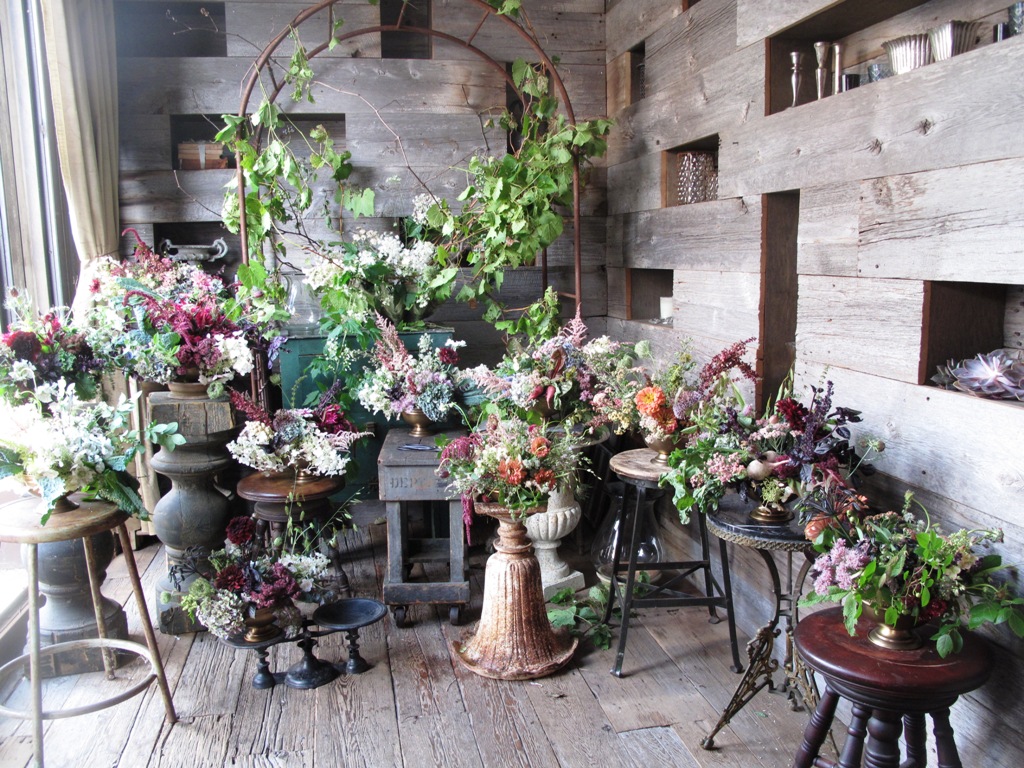
A still-life of the beautiful arrangements created by students of The Little Flower School of Brooklyn, August 2012.
Since then, I’ve watched as The Farm at World’s End has evolved, through Sarah and Eric’s wonderfully-photographed blog and honest, heartfelt text.
Under a heading called “The Idea,” here’s what Sarah writes:
When the economy took a dive in 2008 we started to see a major loss in the NYC flower market. Loss of interesting product. The unusual, weedy, wild stuff that I was so into and that made my work unique. The trouble was that wholesalers had to be safe – the floral industry is one of the first to feel the blow of a weak economy. So wholesalers on the flower block of 28th street stuck to what they knew would sell; your South American hot house roses, ranunculus, lilies, peonies. Here’s a perfect example — pre 2008 you could buy Garden Valley Roses (fragile, exquisite but expensive heirloom roses) on the block.
Around that time I was starting to explore other outlets for material. We found local farms to supplement our market purchases (River Garden, Lebak, Added Value), and also started ordering product direct from the west coast – the promised land of flowers.
Still there was always something I could not locate. Auricula, campanula “pantaloons”, black hellebores, unusual bearded iris…at Saipua we now spend hours and hours searching for the highest quality, most unusual flowers. Visiting flower farms and talking to growers is the best part of my job. You meet these crazy, passionate people and let me tell you – it’s contagious. Eventually you got to try growing yourself. So here we are.
On the flower block back in the city, the guys joke – when are you going to start selling us flowers? I try to explain to them (and to everyone who has not yet been to Worlds End) that it’s a slow process. That we’re years away from producing the opulent abundance that people envision when they hear “Flower Farm”. But I’ve come to realize that it’s not about quantity. I’m not in the business of hustling anymore. None of our work at Saipua will ever require thousands of stems. It will however require a brown iris. And by god, I’m going to grow it.
Fortunately for listeners of The Slow Flowers Podcast, I had a quick 36-hour layover in New York a few weeks ago, en route to my Italian writing retreat. It coincided with a late afternoon opportunity to sit at the kitchen table in Sarah’s Brooklyn apartment, just around the corner from Saipua’s studio. We talked about farming, flowers and collaboration. Please enjoy the conversation.
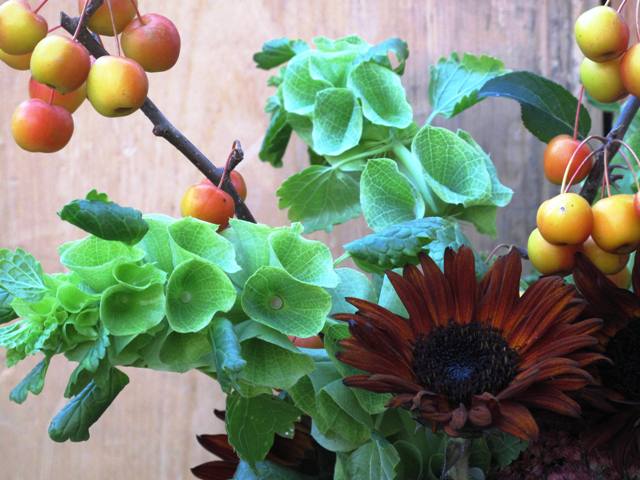
This evocative palette of green and dark maroon expresses complementary colors in a surprising new way.
Podcast: Play in new window | Download
Subscribe: Apple Podcasts | Podcast Index | RSS | More
SLOW FLOWERS Podcast: Fun with Flowers and J Schwanke (Episode 109)
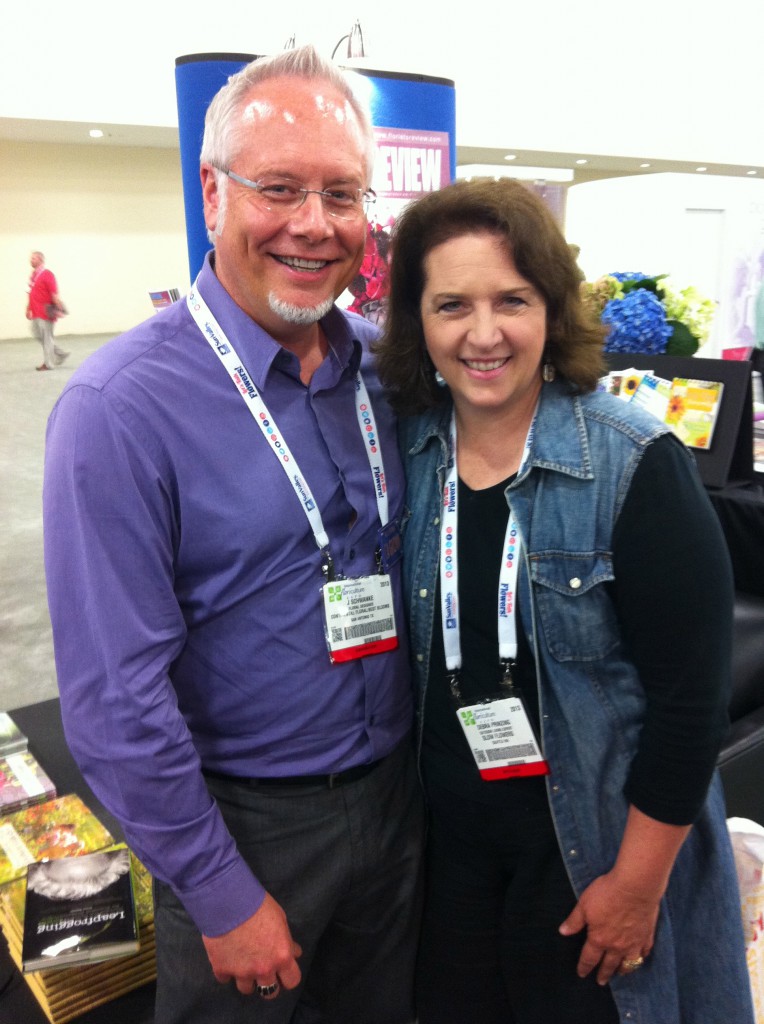
I’ve been having fun running into American-grown flower advocate and floral industry personality J Schwanke. He was one of the friendly faces I enjoyed seeing in Miami earlier this year.
The name J Schwanke is synonymous with flowers and floral design and I’m pleased to introduce you to this energetic and super-talented guy. J is the owner and CEO of uBloom.com, a web site devoted to everything flowers – and the platform for J’s weekly web-based flower television show, “Fun with Flowers and J.”
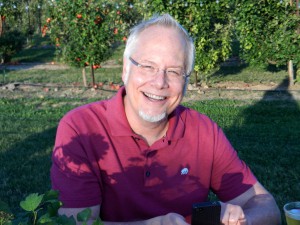
J Schwanke, photographed on a recent fall day after he created the centerpieces for a Farm-to-Table orchard dinner.
He has been promoting American Grown flowers for so much longer than I have – and I credit J for pioneering the message that I’ve also embraced as my personal cause. It’s wonderful to have someone out there already trumpeting the message – and to join together in promoting the Slow Flowers movement.
Since I come from the gardening and DIY floral world and J is very well known in the professional floral world, I didn’t really know who he was during the years I was reporting and writing The 50 Mile Bouquet book. I first met J on my computer screen when I watched one of his California Grown Experience videos, which he produced in 2010-2011 as a series of online tours of California flower farms and related businesses such a floral wholesalers. That’s when J’s telegenetic personality, passion for flowers, and ability to draw out people and their stories impressed me. “Who is this guy, anyway?” I thought.
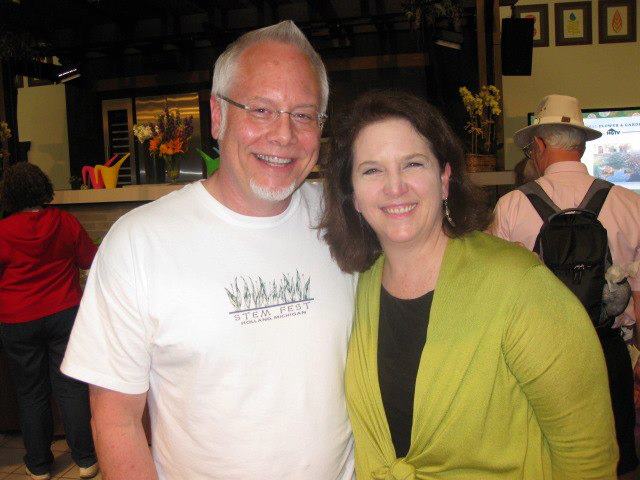
Kelly Blank snapped this photo of J and me on the day we finally met – in late April – at Disney’s EPCOT flower show.
Through our mutual friend and colleague Kasey Cronquist, I eventually met J via phone conference calls in which we both participated.
Then, earlier this year, J and his partner Kelly James Blank surprised me by attending one of my presentations at EPCOT’s International Flower & Garden Festival in Orlando.
That was pretty serendipitious – and it led to an evening of conversation, cocktails and dinner together – talking about our favorite subject: Flowers (former Garden Design magazine editor Sarah Kinbar was also with us – and that was such a treat to be together!)
The California Grown Experience is featured on uBloom.com, the first Web-Based TV Show about Flowers, which J created in 2006 – and which continues to air today. Every Monday, J releases a new “FUN with Flowers” episode. You can find a collection of more than 500 how-to videos and flower farm documentaries on the site, including a new series called the “Florida Fresh Flower and Foliage Tour.” Previews of all J’s shows are included free on the site; viewers can purchase downloads for $1-$2 or subscribe to uBloom for $30 a year to receive complete access to the entire archive.
J has lived his entire life surrounded by flowers, in fact, his mother gave birth to him a flower convention she and his father were running. A fourth-generation florist and foremost expert in cut flowers and foliage, J received the prestigious Tommy Bright Award, lifetime achievement recognition for flower communication. and the Crystal Rose Award, denoting him a “Living Legend” in the world of flowers.
J is a member of the American Academy of Floriculture (AAF) and the American Institute of Flower Designers (AIFD). He is a Certified Flower Designer (CFD) and a designated Professional Flower Communicator International (PFCI). His deep source of energy has sent J around the globe to give presentations, demonstrations and hands-on workshops in all 50 States, Canada, Mexico, and throughout Europe.
I invite you to listen in on our conversation and meet J, too. Then, mosey on over to uBloom.com to learn about all of its features, sign up for J’s free newsletter and learn more about the extensive content offered there.
One of J’s newest ventures, which we discuss on the podcast, is the Professional Resource Guide. This is a free directory that lets professionals and DIY floral designers find WHERE TO BUY the many products and supplies featured on uBloom.com. Here is the link to that excellent new resource.
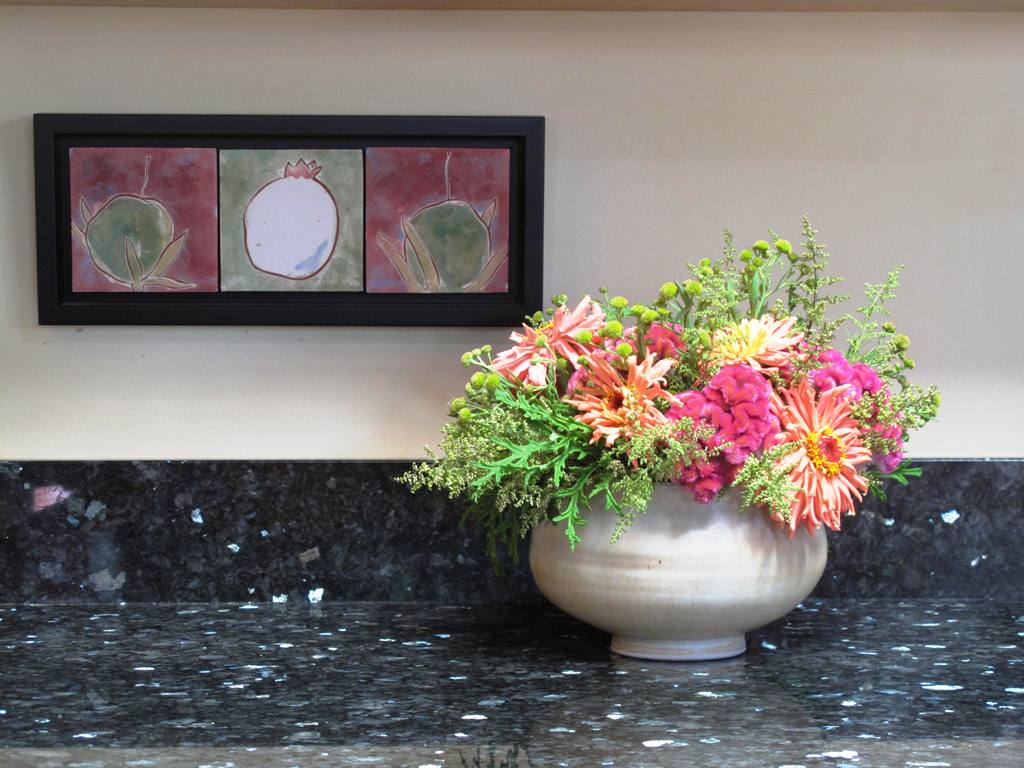
I placed my beautiful bowl of zinnias on the kitchen counter, in front of a botanically-inspired tile triptych by artist Paula Gill of Red Step Studio
© Debra Prinzing, all written and photographic content. Website design/development by Willo Bellwood/Metric Media